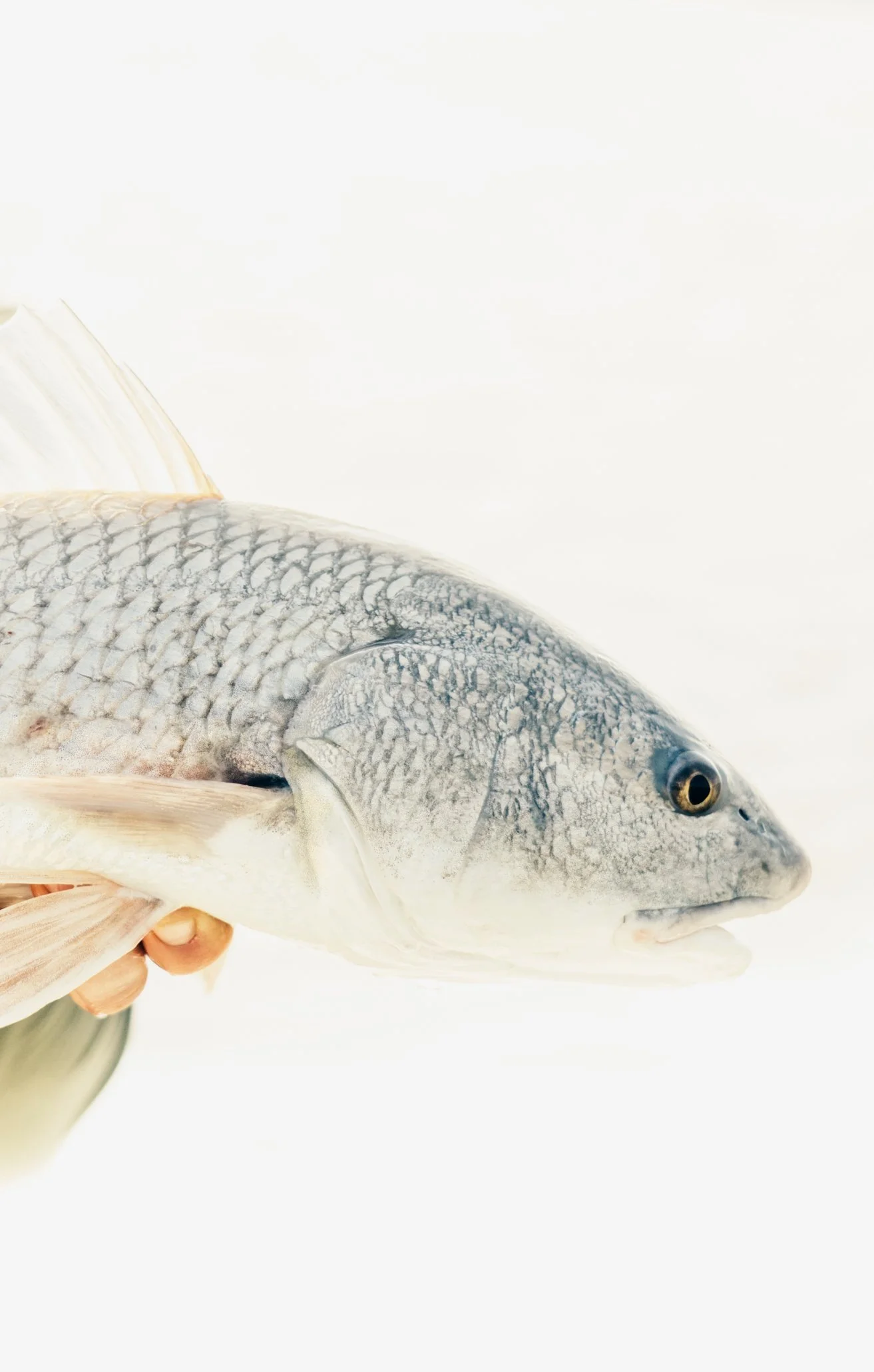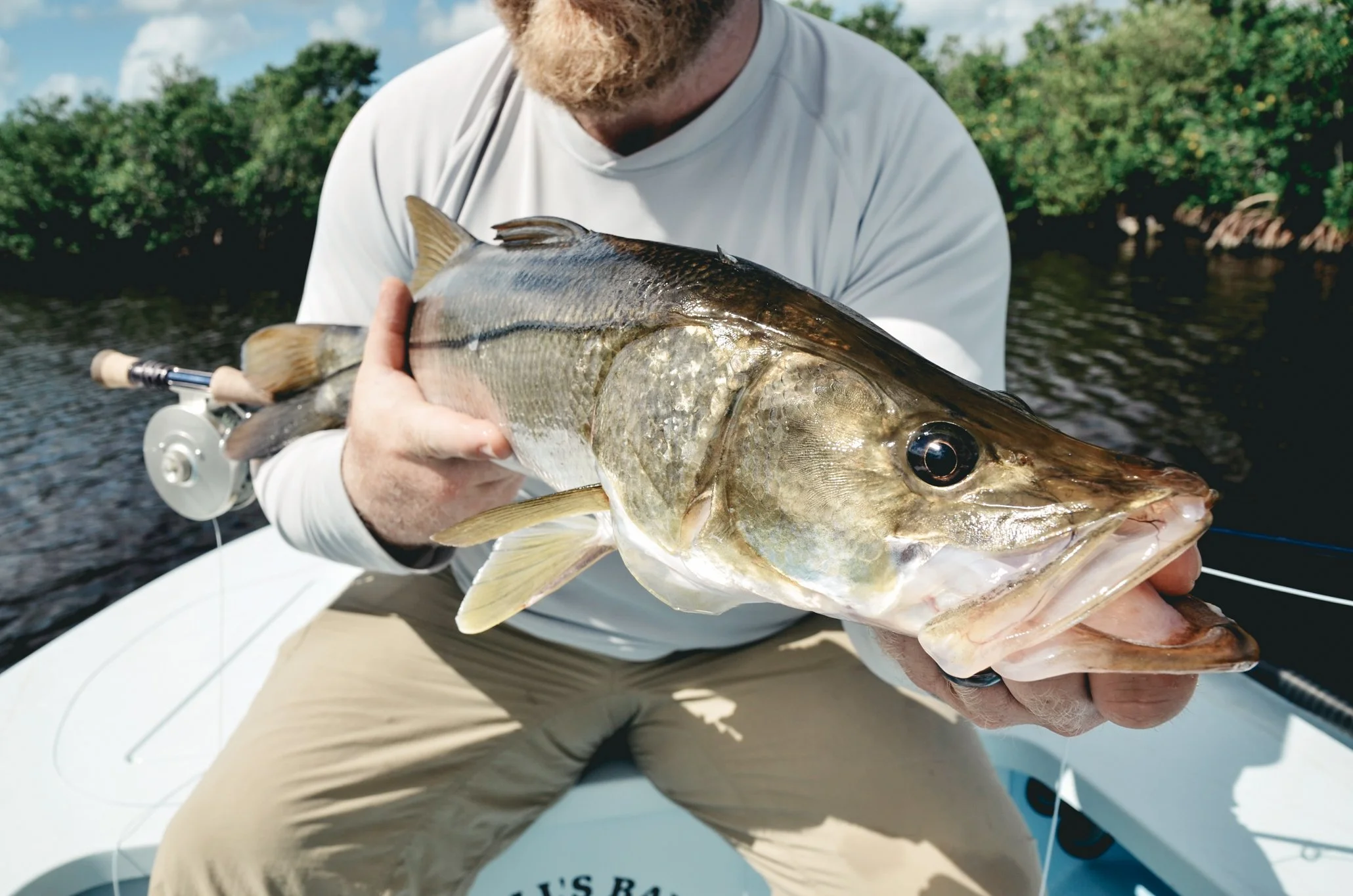Our fish
-

Redfish
These fish are good in number on the outside as well as inside and provide a exciting challenge on fly. The average redfish is 3-6 pounds with numerous 10 pound fish. Most redfish are caught sight fishing, whether that be a shoreline, flat, or backcountry pond. 6wt-8wt are recommended with floating lines. For inshore and light tackle Andy uses a combination of baitcasters and spinning rods.
-

Tarpon
Tarpon can be caught inshore year around, but March through June is their peak season. Most of the tarpon fishing we do here is for laid-up tarpon. Hands down, one of the most exciting ways to catch tarpon on fly. Early morning rollers can also be chased with good success. Juvenile tarpon seem to be most abundant mid to late summer. Most of the tarpon you will encounter are 30 to 120 pounds. Bigger females can push 175 pounds. 10wt. to 12wt. rods are recommended for adult fish while 8wt. to 10wt. rods for juvenile tarpon. Andy uses a mixture of floating and intermediate fly lines depending on the present situation.
-

Snook
Everglades' snook might be the most challenging and rewarding fish in the glades. Sight fishing as well as blind casting snook in the mangroves of the backcountry is our approach. During and after spring migration, they can also be caught on the outer islands while they are cruising or laid-up on the flats and mangrove shorelines. The average snook is 1 to 12 pounds with the biggest fish pushing 20 pounds. 8wt- 9wt rods are recommended with floating lines.
Other species that may be encountered here in Everglades Park: Black Drum, Speckled Trout, Shark, Tripletail, Permit, Pompano, and Jacks
“It’s the best playground I could imagine.”
Everglades National Park is divided into two main inshore fishing sections: the "outside" and the "inside." The inside is a chain of bays connected by river systems where there is more of a fresh water influence than the outside. This area has more of an everglades "jungle" feel. This is what the everglades are most known for. The outside or gulf side is a mix of shorelines, flats, and thousands of mangrove islands. Both present an abundance of varying opportunities to sight fish with a fly and light tackle. The time of year and the conditions will dictate where you'll go.
One of the great advantages about inshore fishing the Everglades is the ability to avoid the wind and weather on almost any given day. Because of the high number of islands and the availability of the backcountry lakes and rivers there always seems to be refuge from inclement weather. Even overcast days present advantages to fishing the mangroves by reducing harsh shadows making the snook more visible in the backcountry. Andy always welcome low wind and sunny weather, but even when its not optimal conditions he is out there fly fishing, catching snook, tarpon, and redfish.
